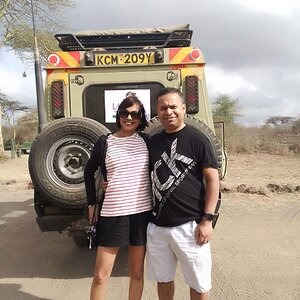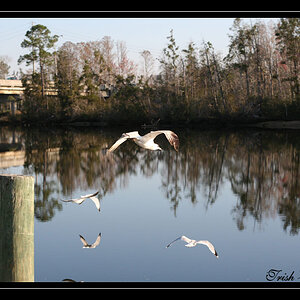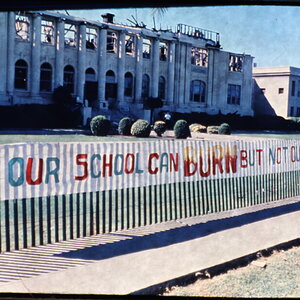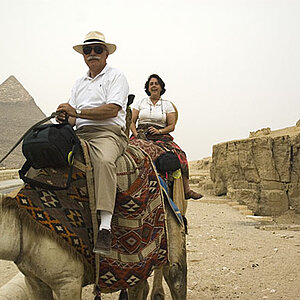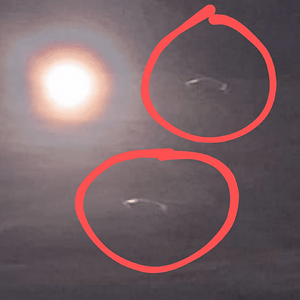A friends dad has invited me to my friends great grandmothers 100th birthday to take pictures. I am somewhat experienced taking photos, although Ive never taken a formal photography class.
Ive been taking photos of scenery mostly, and know very little about taking pictuers of people. I know he doesn't want something entirely 'proffesional', but is still looking for something that will look better than Grampa Bob with a disposable camera, you know?
Im not sure if this will be inside or outside, or how large a group Ill be photographing, but Im nervous about messing this up somehow, because obviously you dont get a second change at a 100th birthday.
As for the finished product, Im not sure if he wants like a CD with JPEGS on it, or I can take it down to this photo shop that prints Digital Camera pictures for like 40cents each. The highest quality setting takes pictures 1600x1200 in TIFF format. Will this be enough for a moderatley large sized print?
So please, if all you kind folks could give me some tips on what I can do to make this work out the best it can. They can be really simple of advanced, I'd appreciate any help with this.
Thanks... Some info on my camera below .
Now Ill be using an Olympus Camedia Digital Camera C-2100, seen here:


Heres some specs I got from a website.
Recording system: Still image; JPEG (DCF: “Design rule for Camera File system” , TIFF (non-compress), DPOF support.
, TIFF (non-compress), DPOF support.
Motion picture; Quick Time Motion JPEG*.
Sound; wave format.
Imager: 1/2 inch CCD. Total pixels: 2,110,000. Effective: 2,020,000.
White balance: iESP (intelligent Electro Selective Pattern) full-auto TTL, manual (daylight, overcast, tungsten light (lamp), fluorescent light).
Lens: Olympus 10x zoom lens. 7.0 - 70 mm, F2.8 - F3.5 with 13 elements in 10 groups.
(Equivalent to 38 - 380 mm lens on 35 mm camera).
Digital Zoom 1 - 2.7x (max. 27x with optical zoom).
Aperture: Wide: F2.8 - F8.0; tele: F3.5 - F8.0.
Light metering: Digital ESP metering system with imager. Centre weighted / spot metering possible.
Exposure control: Programmed auto exposure.
Manual exposure compensation: ±2 EV in 1/3 EV steps.
Aperture priority: Wide; F2.8 -F8.0, tele; F3.5 - F8.0, 1/3 EV steps.
Shutter priority: Still image; 1/2 - 1/800 sec. (with mechanical shutter), 1/3 EV steps.
Auto bracketing: Selectable from 1/3 EV, 2/3 EV and 1 EV; 3 or 5 images.
Manual exposure: Shutter speed up to 16 sec.
QuickTime Motion JPEG image mode: 1/30 - 1/10,000 sec.
Focusing: TTL system autofocus (contrast detection system), manual focus possible.
Working range: Standard mode: Wide: 60 cm - infinity / tele: 2 m - infinity.
Macro mode: Wide: 10 cm - 60 cm / tele: 1 m - 2 m.
Sensitivity: Auto, selectable to approx. equivalent to ISO 100, 200 and 400.
Viewfinder: 0.55 inch wide-angle colour TFT LCD monitor with 114,000 pixels (low-temperature poly-silicon).
Ive been taking photos of scenery mostly, and know very little about taking pictuers of people. I know he doesn't want something entirely 'proffesional', but is still looking for something that will look better than Grampa Bob with a disposable camera, you know?
Im not sure if this will be inside or outside, or how large a group Ill be photographing, but Im nervous about messing this up somehow, because obviously you dont get a second change at a 100th birthday.
As for the finished product, Im not sure if he wants like a CD with JPEGS on it, or I can take it down to this photo shop that prints Digital Camera pictures for like 40cents each. The highest quality setting takes pictures 1600x1200 in TIFF format. Will this be enough for a moderatley large sized print?
So please, if all you kind folks could give me some tips on what I can do to make this work out the best it can. They can be really simple of advanced, I'd appreciate any help with this.
Thanks... Some info on my camera below .
Now Ill be using an Olympus Camedia Digital Camera C-2100, seen here:


Heres some specs I got from a website.
Recording system: Still image; JPEG (DCF: “Design rule for Camera File system”
Motion picture; Quick Time Motion JPEG*.
Sound; wave format.
Imager: 1/2 inch CCD. Total pixels: 2,110,000. Effective: 2,020,000.
White balance: iESP (intelligent Electro Selective Pattern) full-auto TTL, manual (daylight, overcast, tungsten light (lamp), fluorescent light).
Lens: Olympus 10x zoom lens. 7.0 - 70 mm, F2.8 - F3.5 with 13 elements in 10 groups.
(Equivalent to 38 - 380 mm lens on 35 mm camera).
Digital Zoom 1 - 2.7x (max. 27x with optical zoom).
Aperture: Wide: F2.8 - F8.0; tele: F3.5 - F8.0.
Light metering: Digital ESP metering system with imager. Centre weighted / spot metering possible.
Exposure control: Programmed auto exposure.
Manual exposure compensation: ±2 EV in 1/3 EV steps.
Aperture priority: Wide; F2.8 -F8.0, tele; F3.5 - F8.0, 1/3 EV steps.
Shutter priority: Still image; 1/2 - 1/800 sec. (with mechanical shutter), 1/3 EV steps.
Auto bracketing: Selectable from 1/3 EV, 2/3 EV and 1 EV; 3 or 5 images.
Manual exposure: Shutter speed up to 16 sec.
QuickTime Motion JPEG image mode: 1/30 - 1/10,000 sec.
Focusing: TTL system autofocus (contrast detection system), manual focus possible.
Working range: Standard mode: Wide: 60 cm - infinity / tele: 2 m - infinity.
Macro mode: Wide: 10 cm - 60 cm / tele: 1 m - 2 m.
Sensitivity: Auto, selectable to approx. equivalent to ISO 100, 200 and 400.
Viewfinder: 0.55 inch wide-angle colour TFT LCD monitor with 114,000 pixels (low-temperature poly-silicon).



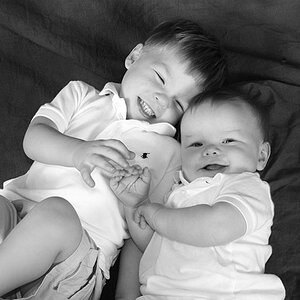
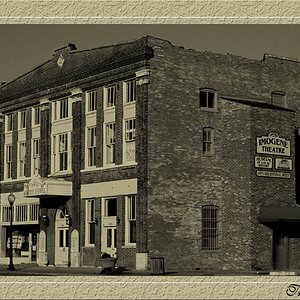
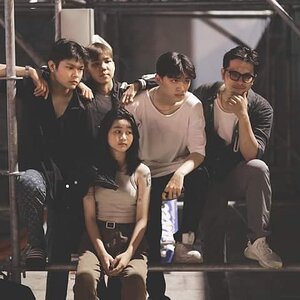
![[No title]](/data/xfmg/thumbnail/42/42280-60cc6d4893a2f440eac7dd2248e733a9.jpg?1619740088)

